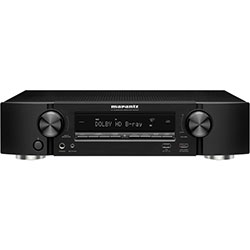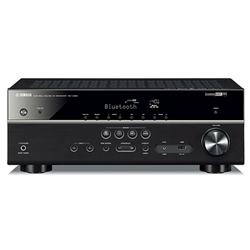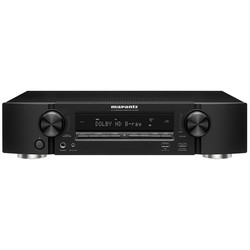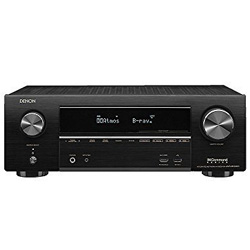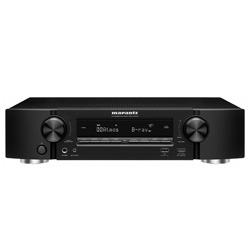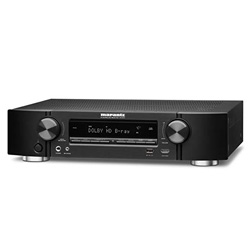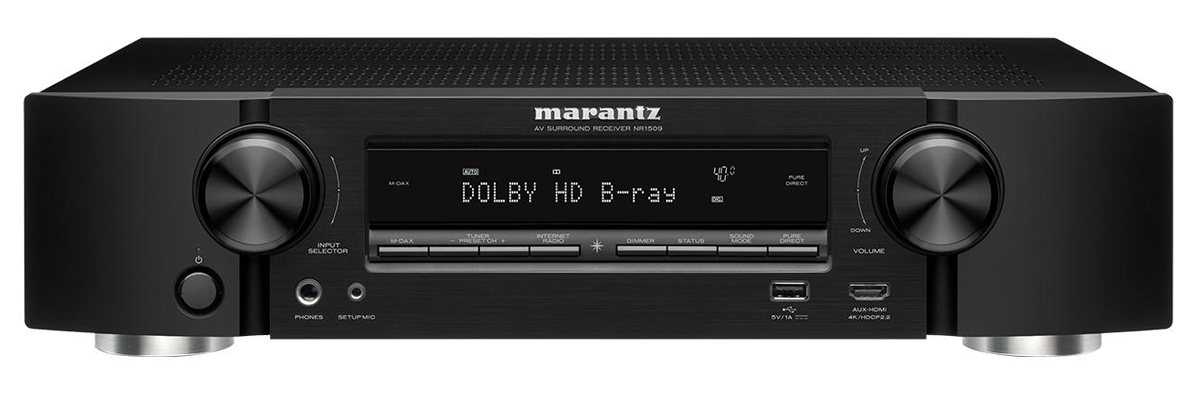 Apart from the Marantz NR1509 specs from this Marantz NR1509 review you will know that the compact and powerful 5.2-channel AV receiver provides support for high-definition surround sound with Dolby TrueHD and DTS-HD Master Audio.
Apart from the Marantz NR1509 specs from this Marantz NR1509 review you will know that the compact and powerful 5.2-channel AV receiver provides support for high-definition surround sound with Dolby TrueHD and DTS-HD Master Audio.
Marantz NR1509 review
Features
The device supports Dolby TrueHD and DTS-HD Master Audio decoders for high-resolution multi-channel audio playback and uses a special mode for energy saving. High-current transistors are involved in five discrete amplifiers of the model, due to which a power of 85 W per channel at 6 Ohms (50 W / 8 Ohms) is achieved and operation is guaranteed even with those speakers whose impedance is 4 Ohms.
Design and build
The 5.2-channel Marantz NR1509 model is assembled in a low-profile slim package. This form factor goes well with modern flat-panel TVs. For wireless switching, the Marantz NR1509 uses Wi-Fi (two bands), Bluetooth and AirPlay (AirPlay 2 protocol with multi-room audio support for Apple devices will be available after a software update). The receiver can be used as a network player and play files in Hi-Res format (including DSD 5.6 MHz), placed on servers and computers on the local network. The same formats are available when playing through the USB port built into the front of the case.
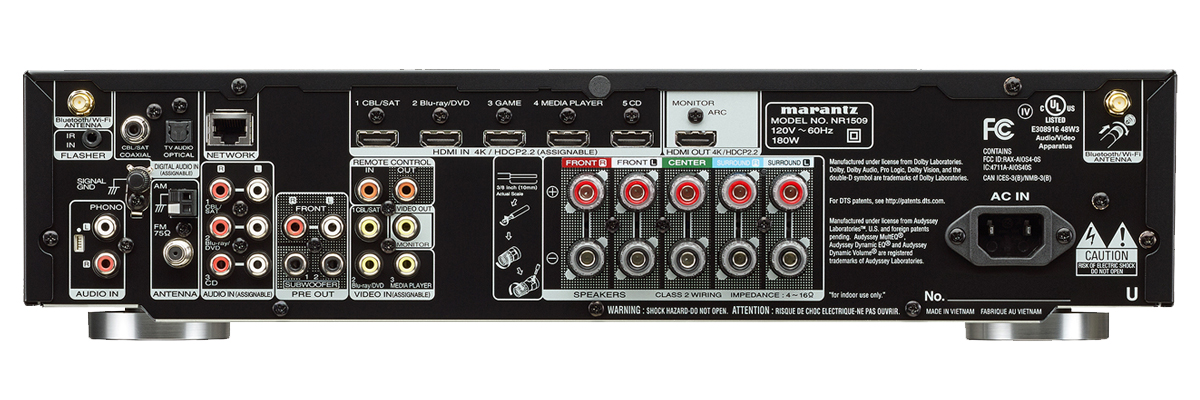
Connectivity
The presence of six HDMI inputs (one on the front panel) guarantees support for 4K / 60 Hz resolution, HDCP 2.2 protocol, BT.2020 color space and video standards with high dynamic range HDR10, Dolby Vision and HLG. There is an HDMI output with a return channel, coaxial and optical inputs, a 2.2-channel RCA output and an MM phono input. To connect the speakers, screw terminals (five pairs) are used, which are color-coded.
Setup
The receiver is “friends” with the HEOS wireless multi-room technology and can be easily integrated into such an ecosystem as a hub. You can control the HEOS system using an application that allows you to send audio files on the local network, as well as audio from tablets / smartphones and streaming content of network services to devices supporting this technology. This ensures accurate synchronization of playing the same track in different locations or sending certain music to the corresponding groups of HEOS devices.
Pros and Cons
Pros
- Really good phono stage considering this is an A/V receiver
- Setup was relatively easy although assigning inputs was a bit questionable
Cons
- The Marantz SW team really needs to fix the software. The unit switches modes randomly
Common features
Product
Model
Brand
Reviews
Amplifier
Channels
Stereo power (RMS), W/Ohm
Output impedance, Ohm
Frequency response
THD in stereo, %
Audio features
Digital to analog converter (DAC)
Bi-amping
Pure direct (straight)
Auto speaker calibration
Speaker A/B switching
Other audio features
Connectivity
Wi-Fi
USB
Bluetooth
Ethernet (RJ45)
DLNA
MHL
Streaming services
Apple Music (AirPlay)
Amazon Music
Spotify
Other streaming services
Extensive connection
HDMI input/output
HDMI ARC (Audio Return Channel)
HDMI eARC (Enhanced Audio Return Channel)
HDMI CEC
Digital content protection (HDCP)
Subwoofer output (LFE)
Headphone output
Optical digital input
Coaxial digital input
Composite input
Component input/output
Phono (MM) input
Front panel connectors
Multi channel preamp output
Video features
HDR (High Dynamic Range)
4K signal pass-through
8K signal pass-through
HDMI signal pass-through
3D signal pass-through
HDMI pass-through in standby mode
Video conversion
Analog to HDMI scaling
HDMI to HDMI scaling
Dolby Vision
Other video features
Additional features
Voice control
App control
Display
Tuner
Sleep timer
Auto power off
ECO mode
Graphical user interface (GUI)
Setup assistant
Firmware update
Other additional features
Multi-room
Multi-room zones
Zone audio output
Zone HDMI output
Multi-room control
RS-232
Remote control input/output (IR)
DC trigger output (12V)
Multichannel surround
Dolby Atmos
Dolby TrueHD
Dolby Surround
Dolby (other)
DTS:X
DTS HD Master
DTS Virtual:X
DTS Neural:X
DTS (other)
Auro-3D
IMAX Enhanced
Multichannel stereo
Audio file formats
MP3
WMA
AAC
WAV
FLAC
ALAC
Other audio file formats
Power
Operational power consumption, W
Standby consumption, W
Removable power cord
User manual
Manual
Dimensions
Size W x H x D, cm/inches
Weight, kg/lbs
Other
Release year



